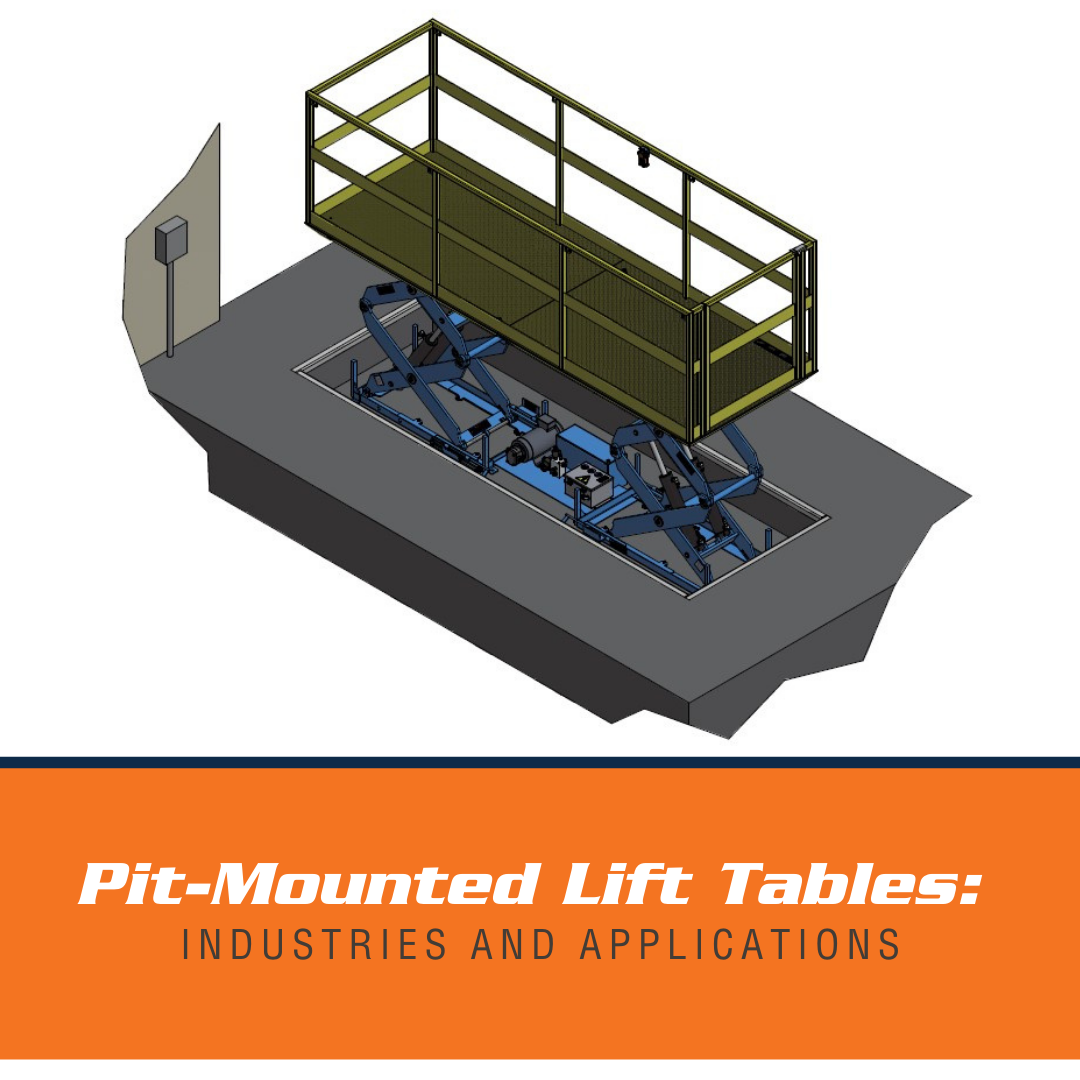We use cookies to make your experience better. To comply with the new e-Privacy directive, we need to ask for your consent to set the cookies. Learn more.
Pit-Mounted Lift Tables: Industries and Applications
Lift Tables provide a solution for lifting heavy materials, whether the goal is to position them for ergonomic work or to elevate them to a mezzanine level. With the right safety features, Scissor Lifts can even lift personnel to improve work positioning. However, not all Lift Tables are suitable for all types of loading.
Most BHS Lift Tables have a minimum lowered height of 8.5 inches. Loading ramps are available, and for many applications, they work perfectly to place loads onto Lift Tables. But some spaces simply don’t have room for a ramp, particularly when they must comply with ANSI 117.1 — Accessible and Usable Buildings and Facilities. This code places a maximum slope limit on ramps used for accessibility. These ramps cannot exceed a 1:12 ratio of rise to length. That is, for every inch of elevation, the ramp must be 1 foot long. 
To be clear, these standards rarely apply to Lift Table ramps. They’re designed for accessibility ramps, like those that provide access to people in wheelchairs. Still, many rooms can’t spare the floorspace even for a short, two-foot loading ramp like the ones that accompany standard BHS Lift Tables.
Other applications may simply need an easier way to pull a pallet jack onto the Lift Table. Or they may need to position personnel at both ground level and higher, depending on the job. These situations need Lift Table surfaces to be even with the floor when fully lowered. That’s where Pit-Mounted Lift Tables can help. For ground-level access to a Lift Table, consider installing a Pit-Mounted model. Here are a few examples of situations in which Pit-Mounted Lift Tables are the best choice of material handling equipment:
- Automotive, tire, and heavy equipment repair. When you’re working on an engine block or a tractor trailer tire, work positioning can mean the difference between strain and comfort. But these heavy items are difficult to push up ramps. Pit Mounted Lift Tables allow mechanics to roll carts or tires directly onto the lifting surface without struggling against elevation.
- Manufacturing lines. Workers on some manufacturing lines may need access that varies by height, including absolute ground-level positioning. A welder or a riveter may need to do work on the bottom of a large product, then ascend multiple feet into the air to complete a task at the top. Pit-Mounted Lift Tables with special safety protections are ideal for these applications. They allow the worker to control their own access height, positioning work at an ergonomic level even when the specific need changes from one item on the line to the next.
- Restaurants and food production. Bulk loads of food can get extremely heavy, especially when you’re accepting pallet-loads at a time. A Pit-Mounted Scissor Lift Table allows receiving staff to carry pallet-loads of ingredients via pallet jack onto the lifting surface, then elevate them to another level. This is particularly valuable in instances where there’s no room for a ramp.
- Distribution centers. Pallet loads and bulky products sometimes need to make it up a short flight of stairs, or from the ground to a dock. Pit-Mounted Lift Tables make this possible without requiring space for ramps. Workers can simply pull pallet jacks onto the table surface, lock the jack’s brakes, and lift the item flush with the higher level. At the higher level, they can unlock the brakes and pull the pallet load on its way.
These examples are by no means exhaustive. Wherever a material-handling task requires floor-flush access to a lift — whether there’s no room for a ramp or a rider needs to go low as well as high — a Pit-Mounted Lift Table is the right tool for the job. To learn more about BHS Lift Tables, call our sales team at 314.BHS.9500.
